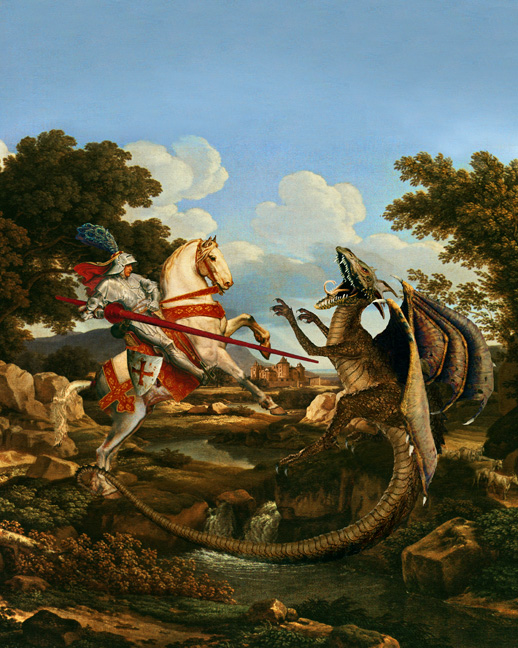Saint George of Lydda
Latin: Georgian, Georgius
Born: Date unknown, Turkey
Died: 23 April, 303 in Israel
The true name of the Red Cross Knight in Spenser’s The Faerie Queene. He is St. George, the patron saint of England.
Saint George is a well-known and revered figure in Christian tradition. He is widely venerated as a martyr and saint, particularly in the Eastern Orthodox, Catholic, and Anglican Churches. Saint George is also recognized as the patron saint of several countries, including England, Georgia, and Portugal, among others.
According to tradition, Saint George was born in Cappadocia (present-day Turkey) in the late third century. The historical details about his life as a soldier under Emperor Diocletian are limited. According to these accounts, Saint George was a high-ranking officer in the Roman army. The Emperor was known for his persecution of Christians, and many Christians, including soldiers, faced challenges and trials during that period. Saint George refused to renounce his faith and was subsequently tortured and executed for his beliefs.
His unwavering commitment to Christianity and his martyrdom have made him an enduring symbol of faith, courage, and chivalry. He died in Lydda (modern-day Israel, in the Roman province of Palestine) on 23 April, 303.
During the Middle Ages, Saint George became an ideal of martial valour and selflessness. The English King Edward I (1272-1307) had banners bearing the emblem of St. George – a red cross on a white background. Edward III (1327-1377) had a relic of his blood. The Flag of England derived from St. George, and the use can be traced back to the late Middle Ages. It represents the entire Kingdom of England, including Wales.

The famous legend about Saint George tells of him rescuing a princess or a noblewoman from a fearsome dragon that terrorized a city. He bravely faced the dragon, protected himself with the sign of the cross, and defeated the creature, thereby saving the princess and the city. This story is symbolic and represents the triumph of good over evil.
Throughout history, Saint George has been revered as a patron saint of soldiers, knights, and warriors, being venerated as a military saint since the Crusades. He is often depicted in Christian art riding a horse, slaying a dragon, and wearing armor, symbolizing his strength and bravery.
Image Credit
St. George and the Dragon | Artist: Howard David Johnson
See also
Saint George and the Dragon | Knighthood and Chivalry
